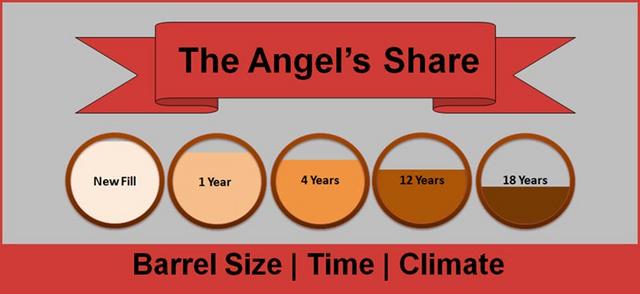Guess its hard to come up with a question on this forum that somebody hasn't already asked and then experimented with
Aging for 21 years
Moderator: Site Moderator
- oakgriff
- Novice
- Posts: 38
- Joined: Wed Feb 07, 2018 11:12 am
- Location: Pacific Northwest
Re: Aging for 21 years
Thanks Badmotivator!
Guess its hard to come up with a question on this forum that somebody hasn't already asked and then experimented with Cheers to you for putting in the work and for sharing it.
Cheers to you for putting in the work and for sharing it.
Guess its hard to come up with a question on this forum that somebody hasn't already asked and then experimented with
-
zapata
- Distiller
- Posts: 1664
- Joined: Fri Jul 07, 2017 1:06 pm
Re: Aging for 21 years
Now that it's mentioned, I think a badmo barrel is THE solution for this. On the face, you get the aesthetics of a barrel. But you also get the right ratio of wood:spirits, and probably the right angel's share as well. Which maybe badmo can guess at? If it's like bourbon aging, I'd expect a bit more than 50% to go to the angels.
- Badmotivator
- Angel's Share

- Posts: 937
- Joined: Tue Jan 20, 2015 9:01 pm
- Location: Oregon
Re: Aging for 21 years
I agree, but of course I’m incredibly biased.zapata wrote:Now that it's mentioned, I think a badmo barrel is THE solution for this. On the face, you get the aesthetics of a barrel. But you also get the right ratio of wood:spirits, and probably the right angel's share as well. Which maybe badmo can guess at? If it's like bourbon aging, I'd expect a bit more than 50% to go to the angels.
I am just a little ways into a 4-Barrel Loss Rate Tracking Program. The empirical annualized loss rates are between 1% and 6% for an unheated barrel. Those numbers will change with every reading. I will only take them seriously if they stabilize, converge, or when a full year has passed. But the early indications are that the loss rate is in line with (and perhaps a little lower than) standard large oak barrels.
Trying to make it real compared to what?
The Badmotivator Bain-Marie and Oak Barrel
Badmotivator Barrel Construction, Start to Finish
The Badmotivator Bain-Marie and Oak Barrel
Badmotivator Barrel Construction, Start to Finish
- Copperhead road
- Rumrunner
- Posts: 575
- Joined: Thu Jan 12, 2017 4:28 pm
- Location: Brisvegas downunder OZ
Re: Aging for 21 years
Good advice if they are not keen to fill a 300L hogshead Barrelpfshine wrote:With the smaller barrels you will need to bottle it after a set period of time dependant on barrel size. Then just put it away and forget about it for 20 years. Char/toast is personal taste, I prefer a light char.
Never mistake kindness for weakness....
- Copperhead road
- Rumrunner
- Posts: 575
- Joined: Thu Jan 12, 2017 4:28 pm
- Location: Brisvegas downunder OZ
Re: Aging for 21 years
That is a great picture Salty, as you know after ordering several big barrels I am keen to learn exactly what the angels steal over time. I intend to fill one 125L barrel and leave it for 12 years, I thought that length of time and the fact I’m using new Oak I’m hoping to replicate a good commercial bourbon....Saltbush Bill wrote:This is roughly what happens over that time, in a smaller barrel the losses would be greater.
Never mistake kindness for weakness....
